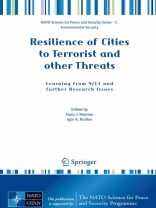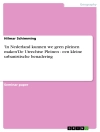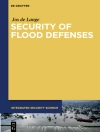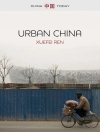Cities tend to become more crowded, the high rise buildings taller, the traffic nodes more complex. The volume of hazardous cargo passing increases with the growth of economy and the expansion of technology. As we have seen in the recent past, cities can become too easily a focus of terror. To counter these trends measures have to be taken. This book presents an overview of threats and measures based on a NATO advanced research workshop meant to make an inventory of items on which, for making progress research will be worthwhile to perform. The spectrum of subjects is broad. It covers various types of hazard threats, the mechanisms of collapse of structures including the doubts about why the WTC buildings collapsed following the impact of aircraft and the ensuing fires. New materials will offer improvements for protection, progress will be described in analyzing the robustness of structures against loading of various nature, and what can be gained by well performed risk control and planning of emergency response, taking trade-offs into account and requiring the new approach of scenario analysis. The book also contains an excellent report about the people flow along evacuation routes. It finally considers warning and communication systems and ways to motivate people to protect themselves.
Содержание
Preface.
I. Nature And Effects of Possible Threat. 1. Threats from terrorist and criminal activity and risk of dangerous accidents — resistance and vulnerability of the urban environment and ways of mitigation; B. Janzon, R. Forsén.- 2. Risk evaluation of terrorist attacks against chemical facilities and transport systems in urban areas; G. Maschio, M.F. Milazzo.- 3. Microbial agents and activities to interfere with groundwater quality; Z. Filip, K. Demnerova.- 4. Preliminary results of a risk assessment study for uranium contamination in central Portugal; M.J. Batista, L. P. Martins.-
II. Fire And Collapse Risks Of Urban Structures. 1. Questions on the WTC investigation; J.G. Quintiere.- 2. The pentagon building performance in the 9/11 crash; P.F. Mlakar et al.- 3. An assessment of a fire risk for multifuel car refueling stations; Yu.N. Shebeko et al.- 4. Quantitative risk assessment of aircraft impact on a high-rise building and collapse; V.A. Panteleev.-
III. Material Properties, Structural Design And Testing. 1. Enhancing impact and blast resistance of concrete with fiber reinforcement; N. Banthia.- 2. Enhancing resilience of urban structures to withstand fire hazard; V.K.R. Kodur.- 3. Concrete structures under blast loading dynamic response, damage, and residual strength; J. Weerheijm et al.- 4. Engineering method for prompt assessment of structural resistance against combined hazard effects; V.M. Roytman, I.E. Lukashevich.-
IV. Future Strategies. 1. A multihazard approach to insure resilient urban structures; T. Krauthammer, J.W. Tedesco.- 2. The role of spatial planning in strengthening urban resilience; M. Fleischhauer.-
V. Warning Systems. 1. Risk, reliability, uncertainties: role and strategies for the structural health monitoring; A. De Stefano, E. Matta.- 2. Distributed optical fiber systems for structural health monitoring; Y.N. Kuichin, O.B. Vitrik.-
VI Emergency Response Planning. 1. How to plan for emergency and disasterresponse operations in view of structural risk reduction; P. Van Der Torn, H.I. Pasman.- 2. Is it possible to use cfd modelling for emergency preparedness and response?; M. Kisa, L. Jelemensky.- 3. Medical countermeasures following terrorism cbnre attack in urban environment; J. Galatas.- 4. Laws of motion of pedestrian flow B basics for evacuation modeling and management; V.V. Kholshevnikov, D.A. Samoshin.- 5. Spatial data infrastructure and geovisualization in emergency management; K. Charvat et al.- 6. Using virtual environment systems during the emergency prevention, preparedness, response and recovery phases; D.A. Baigozin et al.- 7. The role of simulation exercises in the assessment of robustness and resilience of private or public organizations; J.-L. Wybo.- 8. Conclusions with respect to research demands; H.J. Pasman, I.A. Kirillov.-
Index. List of contributors.












